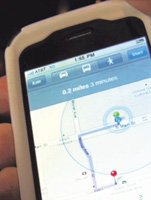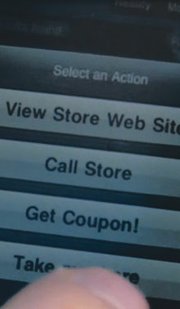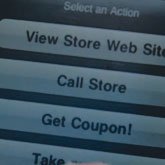Shops and Malls Reach Out With New Mobile Technology
Mobile commerce, or shopping with smart phones, is one of the new frontiers of retail, and entrepreneurs and malls are taking e-commerce to a new level of interactivity with augmented reality.
The Norma Kamali flagship boutique in New York made a splash with it earlier this year. The Victoria Gardens mall in Rancho Cucamonga, Calif., and Disneyland have been among the first California businesses to try it, along with institutions such as the University of California at Santa Barbara. The Los Angeles–based Hollywood & Highland retail center used augmented reality–like quick-response tags in recent advertising campaigns.
This new world of interactive marketing can be found on cell-phone cameras. It starts when consumers download an application such as the “Layar Reality Browser” from Dutch company Layar. Consumers see a whole new world just by pointing their phone cameras at a restaurant or store.In seconds, a restaurant menu or a discount coupon might be flashing on their phone screens. In the case of the Kamali boutique, consumers see a Kamali fashion show.
Images, discounts, menus, directions and almost everything that can be picked up on a website now can be transmitted wirelessly with an app. Entrepreneurs are taking the augmented-reality experiment seriously because it is the direction where a lot of tech-savvy consumers are going, according to Jason Butcher, an augmented-reality consultant for Victoria Gardens, a mall owned and operated by Forest City Enterprises.
“A majority of people will look for information through their phones instead of another device like a laptop,” said Butcher, owner of Random C Enterprises LLC in Claremont, Calif.
More than 21 percent of American wireless subscribers are smart-phone users, and the number is only expected to increase, according to a Nielsen Co. study released last month.
Augmented reality and a similar technology, called quick-response tags, are still in their infancy, and the horizons of their potential are just being charted, said Brian Dyches, a managing director of Ikonic Tonic, a branding agency and production house for augmented reality and quick-response tags in Solana Beach, Calif. “Layar is like Yelp,” Dyches said of the social network and local search website that covers many restaurants and boutiques. “It picks up people broadcasting information.”
The Layer app offers the information one could find on a company’s website, such as a business’s address and hours. But it also offers surprises. At the Disney Store in Montebello, Calif., users can see a cartoon of Tinker Bell flitting around the store. Dyches said stores might be able to run their point-of-sale transactions on these technologies, too. “The mobile phone is not just a telephone anymore; it’s a transactional device,” he observed.
Butcher, the Victoria Gardens consultant, said more than 170 Victoria Gardens tenants are participating in the mall’s augmented-reality program, which debuted a soft launch in November 2009. The process can begin when consumers are driving around and looking for a business or product on Google’s search engine. If the search finds a product or service at Victoria Gardens, they can drive to the mall, where augmented reality will take over their search about a half-mile away from the mall.
At the mall, augmented reality can offer walking directions to specific shops or restaurants and list all of the services and events the business has to offer. Mall General Manager Christine Pham said augmented reality adds more convenience to store information. “The information is already out there,” she said. “We just want to make sure that we reach out to you first.”
It also can offer businesses highly detailed information on shoppers, Butcher said. “We get a tremendous amount of information from Google,” he said. “We know how many people are searching, how long it is taking them to get here.”
Butcher guaranteed individuals’ privacy rights are respected. However, when consumers are using Layar, businesses can find even more information about their prospective clients. “We can track how many people are using it and how long they spend at a store,” he said.

























